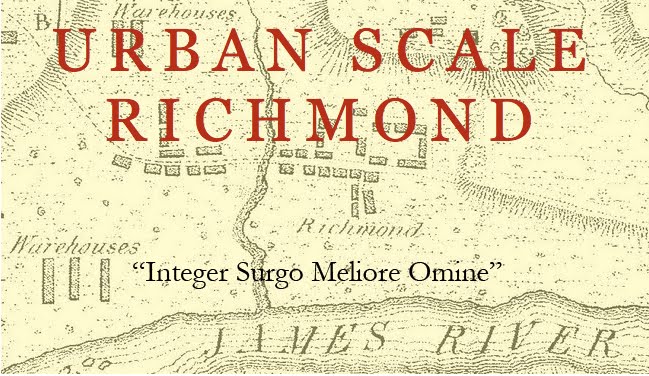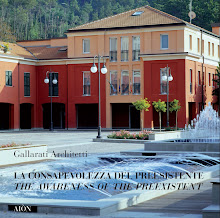Saturday night’s performance at the Byrd Theater by organist Cameron Carpenter ranged across the magical realm of organ music as a theatrical medium. His performance brought out the extraordinary significance of the Byrd Theater to the city of Richmond and of the American Movie Palace to the nation at large as a high point in American theatrical history. The theater organ, a product of American art at its most productive and assimilative moment, arguably represents the modern apogee of the organ as a symphonic instrument.
Allied with (silent) film, the theater organ, with its expanded capabilities, dynamic range, and tonal color, became the American response to Wagner’s Gesamtkunstwerk, a universal or comprehensive work of art. Similarly, the Beaux-arts unity of design embodied in American movie palaces like the Byrd, combining sculpture, architectural articulation, and spectacle, was the populist heir of the great opera houses of late nineteenth-century Europe. Here the American dream was pursued by a restless population longing, not only for transformative spectacle, but for political, psychological, and social resolution.
Like the music of the theater organ, the movie palace seamlessly assimilated every reference in the architectural catalog in service to the great democratic project of American cinema, unafraid of excess or overstatement in the service of its artistic goals. In addition, the organ was fully incorporated into the building’s form, acoustically and visually. The performer was given a central place in the design, visible before the film was shown and invisible during the screening. The organ's enhanced sound was capable of enfolding the viewer into a seamless landscape of sound.
The very committed audience for Saturday's virtuoso performance can attest to Cameron Carpenter’s mastery of this particular, very balky, but sensitive instrument on Cary Street. Out of it he can coax an astonishingly subtle range of sounds, fading and blending from rank to rank of the Byrd’s massive Wurlitzer. Music seemed to shade gradually from one tone color to another and melodic lines were inevitably embroidered and overlaid by complex waves of counterpoint only to emerge later, transformed.
Theater organs are especial favorites of Carpenter, who said in a recent interview that “from the beginning, my concept of the organ had nothing to do with the retiring figure in the organ loft. But rather, someone playing an ornate organ with Mary Pickford on the screen, looking very much like Clark Gable. I had no idea of the organ as a religious instrument.” Carpenter used every bell and whistle that the instrument possesses (except the ocean surf machine) even as he made great use of the organ’s creaky dynamics. At times, the Byrd’s stage sported distant brass bands, choirs of harps, and even what sounded like a flight of bees.
Carpenter allowed the organ its full range of color and power, and devoted most of his time to improvisation on music written for the cinema, which he interspersed with wry commentary about the instrument. The Byrd’s great theater organ wears its years lightly, although it suffers from aging equipment and wiring. Carpenter said that playing this organ, which in spite of its condition is "an especially expressive and articulate instrument," was “like traveling through a country of extraordinary beauty, but instead of riding on a train, you were using one of those carts that are powered by a handle that you have to pump up and down.” Since the combination action, which allows the organist to preset specific arrangements of pipes, is out of order, Carpenter was forced to add an additional layer of complexity to his performance as his hands darted up to change stops.
His concert combined subtle and elegant transformations of Bach with his own interpretations of movie music, turning themes from unexpected or supposedly banal sources into rich, strange, and very personal music, always based in the great inherited tradition of harmony and counterpoint. Although his flamboyant clothes and hairstyle belied it, his presence on the stage was modest and witty and always about the music.
He began with a merrily ghoulish version of “My Favorite Things,” part of a collection of improvisations from cinematic and classical sources, including a oddly insistent “Somewhere over the Rainbow” and a playful “Raindrops Keep Falling on My Head.” This was followed, most memorably, by the music from “Willy Wonka” by Leslie Bricusse, which fascinated Carpenter as a child. He gave it leave to be as "weird and bizarre" as the movie for which it was written, and perhaps as disturbing. He followed this with a powerful reinterpretation of Bach’s Fantasia and Fugue in G minor, demonstrating his astonishing technical and interpretive prowess.
On his return this year to tour the United States from his current base in Germany, Carpenter is surprised at his changed perspective of his native land. He ended the evening with a group of three improvisations based on songs, each of which he had chosen to represent some aspect of America. The second of these was “God Bless America,” which he lovingly embroidered. The last was “Dixie,” which he began almost as a Widor fugue, but which, after a series of colorful variations, ended in an elegiac whisper.












No comments:
Post a Comment